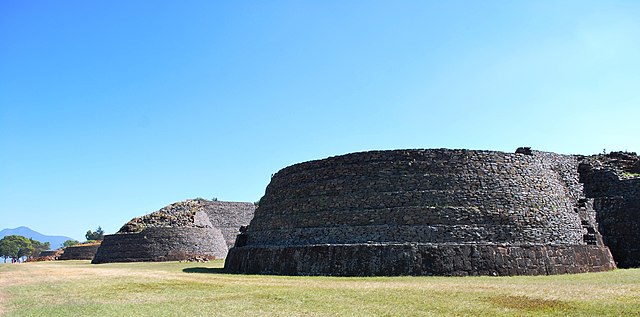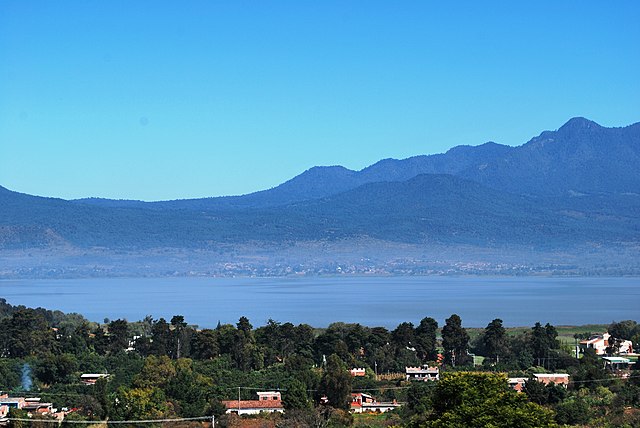Tzintzuntzan (Mesoamerican site)
Tzintzuntzan was the ceremonial center of the pre-Columbian Purépecha capital of the same name. The name comes from the Purépecha word Ts’intsuntsani, which means "place of hummingbirds." The site includes at least 1,000 archaeological features in an area that is at least 1,075 hectares.
View of the yácata pyramids from the south end
Purépecha copper and brass objects in the site museum
View of Lake Pátzcuaro from the site
Excavations by yácatas revealing older structures
The Purépecha Empire, also known by the term Iréchikwa, was a polity in pre-Columbian Mexico. Its territory roughly covered the geographic area of the present-day Mexican state of Michoacán, as well as parts of Guanajuato, Guerrero, and Jalisco. At the time of the Spanish conquest, it was the second-largest state in Mesoamerica. The state is also known as the Tarascan Empire, an exonym often considered pejorative by the Purépecha people.
A Purepecha incense burner showing a deity with a "Tlaloc headdress", 1350–1521 CE.
Islands in Lake Pátzcuaro, viewed from the top of Janitzio island.
The archaeological site of Tzintzuntzan, capital of the Iréchikwa
Fourth yacata pyramid on the south end of the line in Tzintzuntzan.







